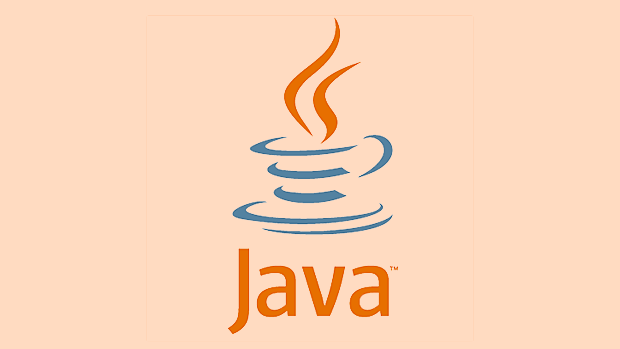How to implement a thread-safe singleton pattern in Java?
Jul 13, 2025 am 01:12 AMThere are three main ways to implement thread-safe singleton mode: First, use double check lock and volatile keywords, enter the synchronization block after the first check that the instance is empty, and confirm again whether it is empty, ensuring that only one instance is created; second, use static inner class (Bill Pugh implementation) to ensure thread safety during class loading through JVM, delay loading and no explicit synchronization is required; third, use enumeration to implement singleton, which is naturally thread-safe and can prevent reflection and serialization attacks, but may not be suitable for complex initialization or inheritance. In addition, the simple lazy style affects performance because each call needs to be synchronized, and is not recommended to use in a multi-threaded environment. Choose different implementation methods according to your needs to take into account security, performance and simplicity.

Implementing a thread-safe singleton pattern in Java is important when you want to ensure that only one instance of a class is created, even in a multi-threaded environment. Here's how to do it properly without overcomplicating things.

Double-Checked Locking with volatile
This method ensures that the singleton instance is created only once and is safe for use in multi-threaded contexts.
You check if the instance exists twice — once without locking, and again inside the synchronized block. This minimizes the performance hit from synchronization after the instance is already created.

public class Singleton {
private static volatile Singleton instance;
private Singleton() {}
public static Singleton getInstance() {
if (instance == null) {
synchronized (Singleton.class) {
if (instance == null) {
instance = new Singleton();
}
}
}
return instance;
}
}Key points:
- The
volatilekeyword ensures visibility across threads. - Two checks (
if (instance == null)) prevent unnecessary synchronization after the first creation. - This approach is efficient and widely used in real applications.
Use Static Inner Class (Bill Pugh Singleton Implementation)
This method uses a nested class to hold the singleton instance. The JVM takes care of thread safety during class initialization.

public class Singleton {
private Singleton() {}
private static class SingletonHelper {
private static final Singleton INSTANCE = new Singleton();
}
public static Singleton getInstance() {
return SingletonHelper.INSTANCE;
}
}Why this works well:
- The inner class isn't loaded until
getInstance()is called. - Class loading in Java is guaranteed to be thread-safe.
- No need for explicit synchronization or
volatile.
This is often preferred because it's clean, thread-safe, and doesn't require special handling for performance.
Enum-Based Singleton
Enums are inherently thread-safe and provide a simple and effective way to implement singletons.
public enum Singleton {
INSTANCE;
// You can add methods here
public void doSomething() {
// ...
}
}To use it:
Singleton.INSTANCE.doSomething();
Advantages:
- Prevents against reflection attacks (constructors can't be called more than once).
- Handles serialization automatically.
- Very concise and safe.
However, some developers avoid enums for more complex initializations or when they need inheritance.
Avoid Simple Lazy Initialization
A basic implementation like this is not thread-safe:
public class Singleton {
private static Singleton instance;
private Singleton() {}
public static synchronized Singleton getInstance() {
if (instance == null) {
instance = new Singleton();
}
return instance;
}
} The problem? Every call to getInstance() will go through synchronization, which affects performance after the first time. That's why double-checked locking or other approaches are better.
Also, if you skip the synchronized keyword entirely, multiple threads could create multiple instances.
So depending on your needs — whether it's simplicity, performance, or protection against edge cases — you can choose between double-checked locking, static inner classes, or enums.
Basically that's it.
The above is the detailed content of How to implement a thread-safe singleton pattern in Java?. For more information, please follow other related articles on the PHP Chinese website!

Hot AI Tools

Undress AI Tool
Undress images for free

Undresser.AI Undress
AI-powered app for creating realistic nude photos

AI Clothes Remover
Online AI tool for removing clothes from photos.

Clothoff.io
AI clothes remover

Video Face Swap
Swap faces in any video effortlessly with our completely free AI face swap tool!

Hot Article

Hot Tools

Notepad++7.3.1
Easy-to-use and free code editor

SublimeText3 Chinese version
Chinese version, very easy to use

Zend Studio 13.0.1
Powerful PHP integrated development environment

Dreamweaver CS6
Visual web development tools

SublimeText3 Mac version
God-level code editing software (SublimeText3)

Hot Topics
 Difference between HashMap and Hashtable?
Jun 24, 2025 pm 09:41 PM
Difference between HashMap and Hashtable?
Jun 24, 2025 pm 09:41 PM
The difference between HashMap and Hashtable is mainly reflected in thread safety, null value support and performance. 1. In terms of thread safety, Hashtable is thread-safe, and its methods are mostly synchronous methods, while HashMap does not perform synchronization processing, which is not thread-safe; 2. In terms of null value support, HashMap allows one null key and multiple null values, while Hashtable does not allow null keys or values, otherwise a NullPointerException will be thrown; 3. In terms of performance, HashMap is more efficient because there is no synchronization mechanism, and Hashtable has a low locking performance for each operation. It is recommended to use ConcurrentHashMap instead.
 Why do we need wrapper classes?
Jun 28, 2025 am 01:01 AM
Why do we need wrapper classes?
Jun 28, 2025 am 01:01 AM
Java uses wrapper classes because basic data types cannot directly participate in object-oriented operations, and object forms are often required in actual needs; 1. Collection classes can only store objects, such as Lists use automatic boxing to store numerical values; 2. Generics do not support basic types, and packaging classes must be used as type parameters; 3. Packaging classes can represent null values ??to distinguish unset or missing data; 4. Packaging classes provide practical methods such as string conversion to facilitate data parsing and processing, so in scenarios where these characteristics are needed, packaging classes are indispensable.
 What are static methods in interfaces?
Jun 24, 2025 pm 10:57 PM
What are static methods in interfaces?
Jun 24, 2025 pm 10:57 PM
StaticmethodsininterfaceswereintroducedinJava8toallowutilityfunctionswithintheinterfaceitself.BeforeJava8,suchfunctionsrequiredseparatehelperclasses,leadingtodisorganizedcode.Now,staticmethodsprovidethreekeybenefits:1)theyenableutilitymethodsdirectly
 How does JIT compiler optimize code?
Jun 24, 2025 pm 10:45 PM
How does JIT compiler optimize code?
Jun 24, 2025 pm 10:45 PM
The JIT compiler optimizes code through four methods: method inline, hot spot detection and compilation, type speculation and devirtualization, and redundant operation elimination. 1. Method inline reduces call overhead and inserts frequently called small methods directly into the call; 2. Hot spot detection and high-frequency code execution and centrally optimize it to save resources; 3. Type speculation collects runtime type information to achieve devirtualization calls, improving efficiency; 4. Redundant operations eliminate useless calculations and inspections based on operational data deletion, enhancing performance.
 What is an instance initializer block?
Jun 25, 2025 pm 12:21 PM
What is an instance initializer block?
Jun 25, 2025 pm 12:21 PM
Instance initialization blocks are used in Java to run initialization logic when creating objects, which are executed before the constructor. It is suitable for scenarios where multiple constructors share initialization code, complex field initialization, or anonymous class initialization scenarios. Unlike static initialization blocks, it is executed every time it is instantiated, while static initialization blocks only run once when the class is loaded.
 What is the Factory pattern?
Jun 24, 2025 pm 11:29 PM
What is the Factory pattern?
Jun 24, 2025 pm 11:29 PM
Factory mode is used to encapsulate object creation logic, making the code more flexible, easy to maintain, and loosely coupled. The core answer is: by centrally managing object creation logic, hiding implementation details, and supporting the creation of multiple related objects. The specific description is as follows: the factory mode handes object creation to a special factory class or method for processing, avoiding the use of newClass() directly; it is suitable for scenarios where multiple types of related objects are created, creation logic may change, and implementation details need to be hidden; for example, in the payment processor, Stripe, PayPal and other instances are created through factories; its implementation includes the object returned by the factory class based on input parameters, and all objects realize a common interface; common variants include simple factories, factory methods and abstract factories, which are suitable for different complexities.
 What is the `final` keyword for variables?
Jun 24, 2025 pm 07:29 PM
What is the `final` keyword for variables?
Jun 24, 2025 pm 07:29 PM
InJava,thefinalkeywordpreventsavariable’svaluefrombeingchangedafterassignment,butitsbehaviordiffersforprimitivesandobjectreferences.Forprimitivevariables,finalmakesthevalueconstant,asinfinalintMAX_SPEED=100;wherereassignmentcausesanerror.Forobjectref
 What is type casting?
Jun 24, 2025 pm 11:09 PM
What is type casting?
Jun 24, 2025 pm 11:09 PM
There are two types of conversion: implicit and explicit. 1. Implicit conversion occurs automatically, such as converting int to double; 2. Explicit conversion requires manual operation, such as using (int)myDouble. A case where type conversion is required includes processing user input, mathematical operations, or passing different types of values ??between functions. Issues that need to be noted are: turning floating-point numbers into integers will truncate the fractional part, turning large types into small types may lead to data loss, and some languages ??do not allow direct conversion of specific types. A proper understanding of language conversion rules helps avoid errors.






